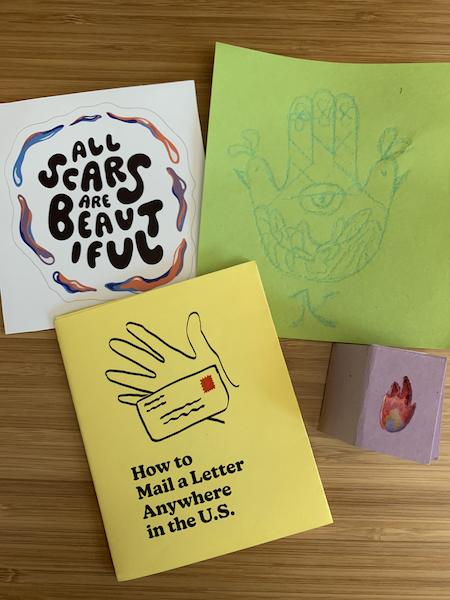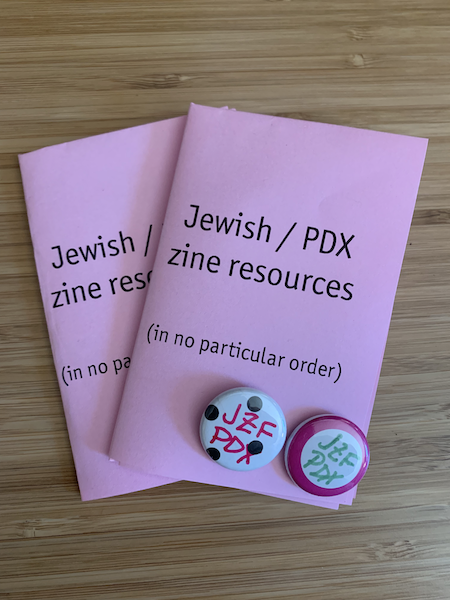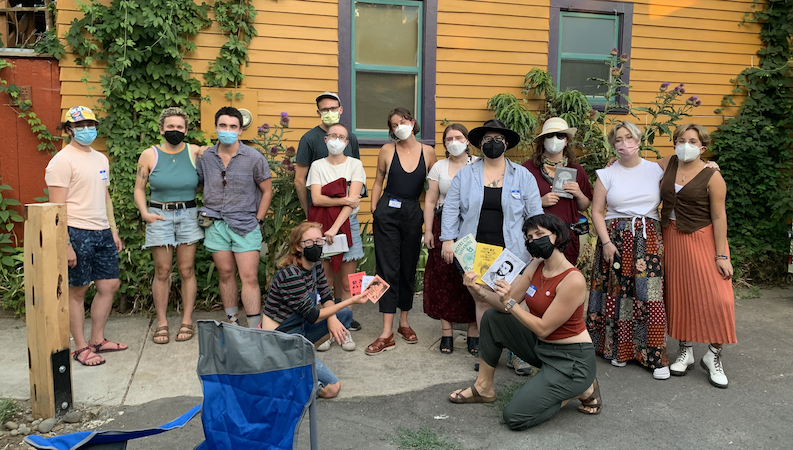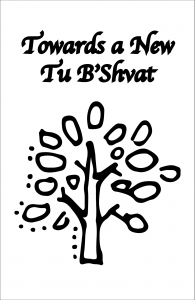TL;DR
I’m excited to present A Haggadah of Our Own, along with an accompanying Host’s Guide. I’m making it available to download. You’re welcome to download it for free here. If you’re inclined to support the project monetarily, you can pay whatever you feel comfortable with.
This is the culmination of close to six months of work, including the Kickstarter I ran in December. I’m considering doing another print run in time for Pesach next year (2020), so keep an eye out for that later this year.
For those who are interested, here’s a deep dive into how this Haggadah was developed.
Choices
The goal of A Haggadah of Our Own is to offer an inclusive Haggadah for as many readers as possible in one volume. Inclusion is a broad term: Within inclusion, we can talk about what can prevent a person from accessing the contents of a Haggadah. We can also talk about whether the story of Pesach is told in words that make a reader feel excluded or disconnected.
I say “as many readers as possible” because different readers have different needs. Throughout the process of developing A Haggadah of Our Own, I had to choose which needs I could meet. This article lays out some of those choices and the context around them, as well as details about the processes I used to make those decisions. This is going to get pretty meta.
This article is also going to cover where I’d like this project to go in the future. A Haggadah of Our Own is not the last Haggadah I expect any of us to buy (though it will last you a while). Some of the approaches in A Haggadah of Our Own are experimental — as results and responses come in, I fully expect to be able to improve on this initial version. In the meanwhile, though, we’ve got a more welcoming Haggadah.
One of those choices was the level of religiosity in this religious text. Rather than perfectly parsing Jewish law, A Haggadah of Our Own focuses on the participation of all attendees. It’s primarily in a vernacular language (English) and offers alternative blessings for Jewish humanists. It’s not the Haggadah for some readers, of course: for some Jews, precise observances of Pesach traditions are a higher priority. The priority here, however, is inclusion. No one should have to prove that they are Jewish enough to participate in Jewish life.
A Haggadah of Our Own includes traditions from all over the world but has a bias towards those from Ashkenazi and Sephardic communities. The availability of Pesach materials from different Jewish communities reflects underlying divides among those communities. Frankly, Ashkenazim have a sort of Jewish cultural hegemony that routinely erases other Jewish identities. I worked to minimize that primacy within this Haggadah but was limited by the resources (especially research materials) I had. Furthermore, I’m Ashkenazi and favored Yiddish over Ladino, along with transliteration that reflects Ashkenazi pronunciation. I can justify that decision by saying that I’m more familiar with Yiddish and could find more editorial support, but I know that it’s a weakness in terms of our inclusivity and an area I want to improve in.
I also chose to include gender-expansive blessings throughout the Haggadah. The decision to do so was one of the hardest decisions I made during the development of this material. There are many different factors at play here:
- Hebrew is a gendered language, meaning that words are grammatically masculine or feminine. Spanish is another example of a gendered language, which is evolving to provide more options. “Latinx,” for instance, is an alternative to Latino (which is masculine) and Latina (which is feminine).
- While there are many proposals on how to update Hebrew, there isn’t yet a standard on how to do so. All of the options I reviewed are effectively experimental linguistics.
- Hebrew’s linguistic history is complicated: By 400 CE Hebrew was only used for communication between Jewish communities and religious purposes. In the 19th century, Zionists revived Hebrew. Modern Hebrew is used in Israel today. Hebrew is the only successfully revived dead language. That means that each update to Hebrew must navigate millennia of history and bias.
- I received conflicting feedback from sensitivity readers about relative comfort levels with these blessings. It was a crucial reminder that communities aren’t monoliths and required me to make a decision that addressed all of the feedback I received.
The result is that I expect to need to update these blessings in the future. As new approaches to updating gendered languages become available in the future, Jewish communities will develop new norms. In the meanwhile, though, we can’t ignore the discomfort of trans and non-binary attendees. I chose to include gender-expansive blessings after research and feedback, while adding context and linking to criticism within the Host’s Guide.
Lastly, I decided to keep the Haggadah itself as clear as possible, so that it can easily be used and expanded by as many communities as possible. Suggestions for implementation are in the Host’s Guide, because so much of that material is relevant in planning a seder, rather than conducting a seder.
Research
During the research process, I read dozens of Haggadot. I prioritized reading materials created by communities over those prepared by publishing houses because many of the professionally published Haggadot are similar.
I also spent a lot of time Googling the word “haggadah” in combination with different communities, accommodations, and negative experiences. I spent a lot of time looking at bad examples and reading criticism about how to fix those issues. Those updates were low-hanging fruit and I’ve listed the articles and authors in the bibliography below.
As useful as all of those research materials were, though, talking to actual people about their experiences around the seder table was crucial.
When researching and developing appropriate accommodations, I have to give specials thanks to Elea Chang and Melissa Chavez. I’ve worked with them on several projects and I’ve tried to reflect their dedication to accessibility best practices in this Haggadah.
Writing + Editing
Developing A Haggadah of Our Own was more about editing and updating than writing new material. On the other hand, the Host’s Guide is all new writing.
The Kickstarter allowed me to work with amazing editors and sensitivity readers, who really helped me bring this project to a level I couldn’t hope to reach on my own. If you ever get a chance to work with any of these folks, you should grab that opportunity. Check out their projects at the links below
A special thank you to my partner, who has helped at every step of this process, from crafting artisanal HTML to make my EPUBs work properly, copy edited basically everything, and doesn’t get financial compensation. In fact, he backed the Kickstarter, so he kinda paid to get to work on the project… that’s definitely true love.
Design
Because different people need different types of accommodations, I had to decide what needs to prioritize when designing the print and digital book. I knew from the start that I wanted to create a Haggadah that worked with screen readers. I also chose to focus on making the print version of the Haggadah visually acceptable.
The font used in the Haggadah is APHfont, a font developed by the American Printing House for the Blind. The font’s features include:
- More even spacing between letters.
- Higher crossbars.
- No serifs.
- Wider letters.
- Heavier letters.
- Underslung “j” and “q”.
- Letters more open.
- Larger punctuation marks.
I went back and forth quite a bit, debating whether to use a font developed for readers with dyslexia, but APHfont offered the best all around accessibility. I would like to offer at least digital copies adjusted to meed different accessibility needs, such as a version optimized with that font developed for readers with dyslexia.
Laying out a Haggadah comes with some special design issues, by the way: the only way I was able to correctly layout Hebrew text (which flows right to left, rather than English’s left to right) was by downloading the Middle Eastern version of Creative Suite. As it turns out, the standard edition doesn’t allow for flowing text right to left.
Hebrew and other non-Latin alphabets also present a challenge when using screen readers. Many screen readers don’t support non-Latin alphabets and those that do have some quirks. VoiceOver on Mac, for instance, does support Hebrew — but that means reading off each individual letter, rather than words. Within the ebook, those screen readers that don’t support Hebrew use transliterations. The pronunciation isn’t ideal, but that’s a future project. VoiceOver presented some other issues, as well, requiring a version of the ebook optimized just for VoiceOver.
I also originally planned to include more design elements. I underestimated the time I’d need to commission and layout art. I hit a point where either I could get art or printed copies and I chose to make sure I could send out printed copies. I hope to create a new version with added art in the near future.
Printing + Shipping
Printing locally is important to me, partially because I can go over and look at proofs. The locality is important because every project faces delays and usually winds up a little tight, so being able to go physically get the books and mail them is nice. Morel Ink, a Portland, Oregon-based printer, printed the Haggadot. In addition to being easy to work with, Morel is a women-owned, union shop that values community. They support local non-profits and community organizations, making me happy to give them money. And a special shout out to Libby at Morel, who made miracles happen.
I also owe special thanks to Audrey Eschright, who let me copy and paste The Recompiler’s shipping process. In case you’re wondering why return labels listed The Recompiler, Audrey printed my paid postage labels. While my printer offered mailing services, packing and shipping the books myself was cheaper. And when I say myself, I need to include my amazing sister who told jokes and put books in envelopes in between work shifts.
Copyright
Copyrighting a Haggadah is kinda silly given that most of the material is sourced from millenia-old stories, especially given the importance Judaism puts on sharing knowledge as widely as possible. But then again, I find a lot of copyright law pretty silly. Both A Haggadah of Our Own and the Host’s Guide are licensed under Creative Commons, allowing anyone to use this material for non-commercial uses without needing to ask first.
I chose a non-commercial license not because I’m against the idea of other people using this material in commercial settings, but because I want to be aware of such projects and can ensure that they have the same sort of ethos.
Money
I’m never going to run a Kickstarter again. I said that after the RCSG Kickstarter campaign, but this time I mean it.
I ran the Kickstarter because paying contributors of all kinds is super important to me. I did wind up with a little extra budget, due to not being able to integrate the art I was hoping for. As a result, I increased pay rates for sensitivity readers and editors. I also have a little money left over (after setting aside money for taxes) which I plan to use as the seed funding for a future edition with more art.
Future
I’d like to do an update for 2020. I’m not sure yet what that means. In particular, I’ll only do another print run with a pre-order sale. I do have some goals:
- I’d love to be able bring in more people, with more perspectives
- Make available in more formats. I’m hoping to just keep adding to the versions of this Haggadah that are available, such as a version that better accommodates readers with dyslexia.
- Bring in Ladino — this is going to require money because I definitely need to bring in a subject matter expert with editorial experience.
Partial Bibliography
Articles
Dunn, Mason. “Four Questions About Trans Rights.” JewishBoston.com.
Gross, Lior. “Nonbinary Hebrew Project.” NonbinaryHebrew.com.
Shalev, Asaf. “When Israel’s Sephardic Black Panthers Used Passover to Decry Racism.” Forward.com.
Takács, Bogi. “Nonbinary Hebrew.” Twitter.com
Twitty, Michael. “I’m Dreaming of an … African American … Passover.” Afroculinaria.com
Ungar, Eli. “My First Racist Haggadah.” Jewschool.com.
Books
Angel, Marc. A Sephardic Passover Haggadah. KTAV Publishing House.
Barenblat, Rachel. The Velveteen Rabbi’s Haggadah for Pesach. VelveteenRabbi.com.
Biber, Benyamin. The Machar Haggadah. Machar.org
Broner, E.M. and Naomi Nimrod. The Women’s Haggadah. Harper San Francisco.
JACS. The Anonymous Haggadah. JB FCS.
Jewdas. The Jewdas Cut and Paste Haggadah. Jewdas.org.
JFREJ. #BLM Haggadah. JFREJ.com.
JFREJ. Juneteenth Haggadah. JFREJ.com.
JFREJ. Mixed Multitudes: Nobody’s Free ‘til Everybody’s Free. JFREJ.com.
Pearce-Glassheim, Elizabeth. Haggadah for Jews and Buddhists. Modern Haggadah Distribution Company.
RTI. The Revenge of Dinah. DePaul University.
T’ruah. The Other Side of the Sea. Truah.org.
Waskow, Arthur. The Freedom Seder. The Shalom Center.
Websites
Haggadot.com
RitualWell: Passover. RitualWell.com.
My Jewish Learning: Passover. MyJewishLearning.com.
Chabad: Passover. Chabad.org.




